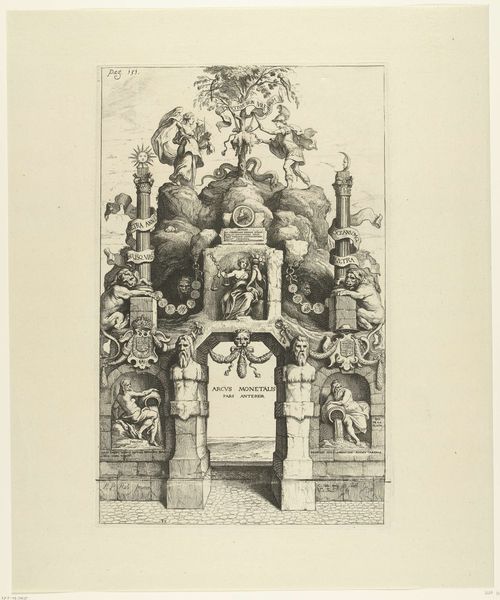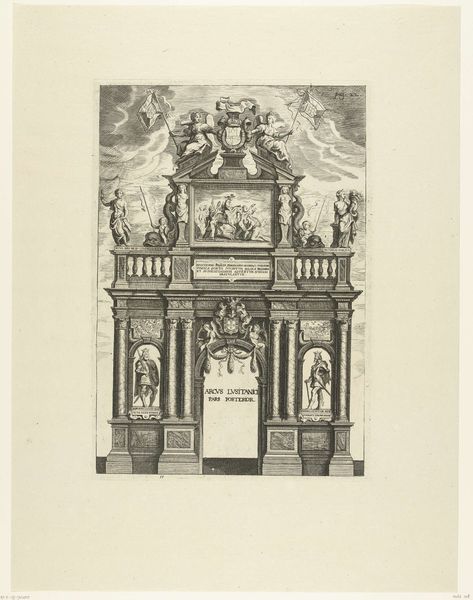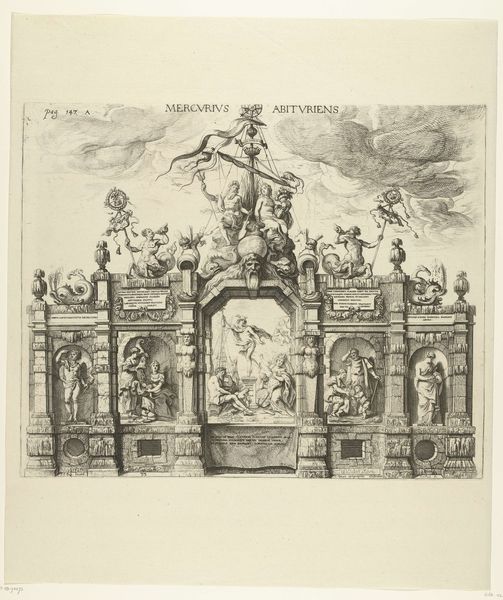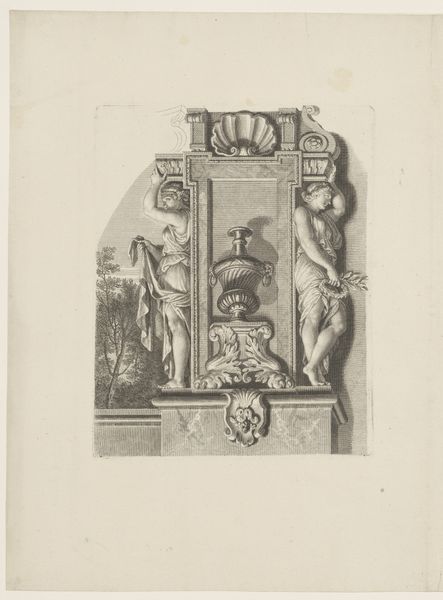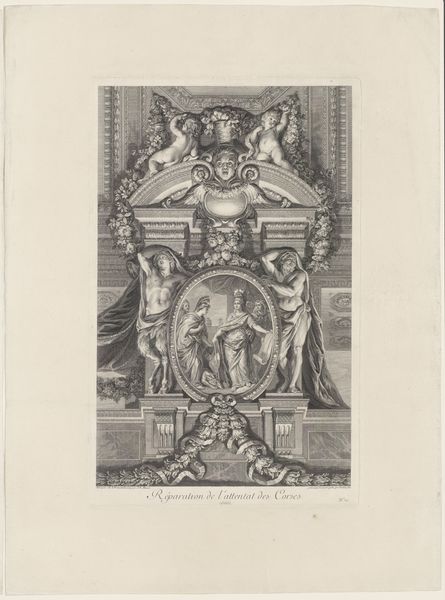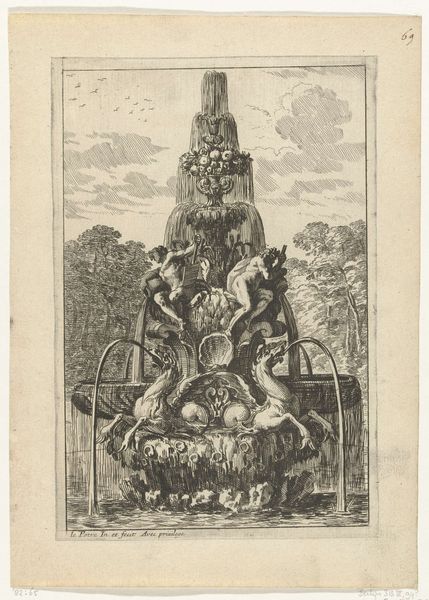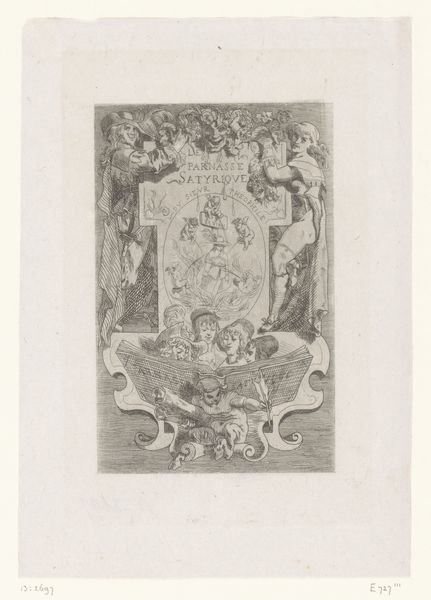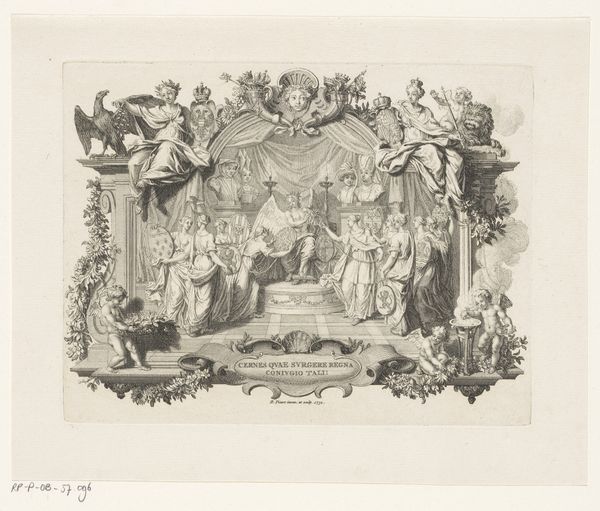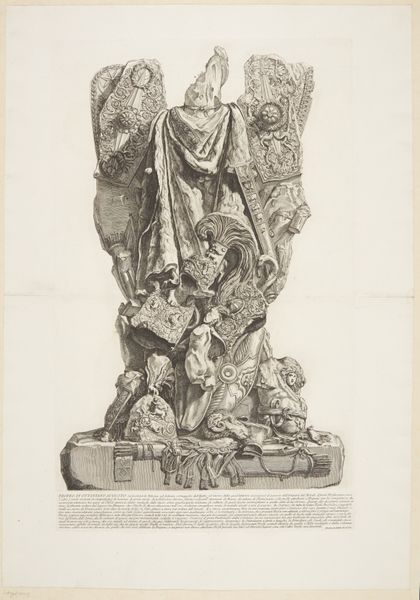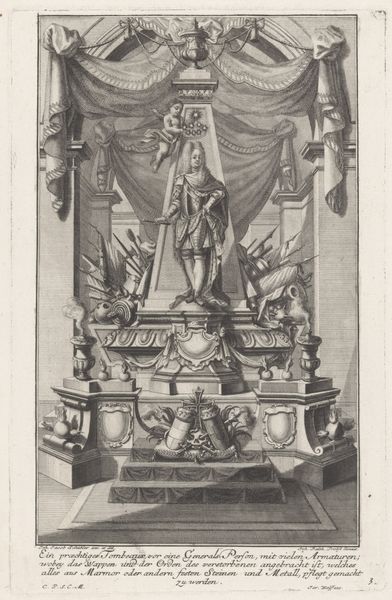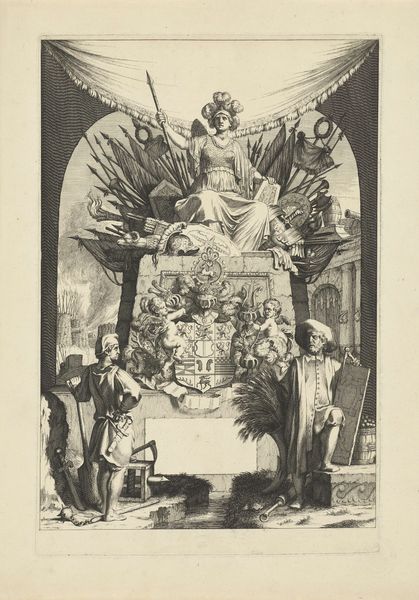
Triomfboog van de Munt (achterzijde); intocht van Ferdinand te Antwerpen in 1635 (nr. 36) 1639 - 1641
0:00
0:00
print, engraving
#
baroque
# print
#
cityscape
#
history-painting
#
engraving
Dimensions: height 481 mm, width 317 mm
Copyright: Rijks Museum: Open Domain
Theodoor van Thulden created this print, "Triumph Arch of the Mint (rear); entry of Ferdinand in Antwerp in 1635" using etching. Etching is a printmaking process that relies on the corrosive power of acid to create lines in a metal plate. First, the plate is coated with a waxy, acid-resistant substance. The artist then scratches an image into the wax, exposing the metal. When the plate is immersed in acid, the exposed lines are eaten away. The longer the plate stays in the acid, the deeper the lines become, which influences the darkness of the printed line. The etched lines in this print are remarkably delicate, allowing for great detail. These lines have a graphic, textural quality that contributes significantly to the artwork's overall appearance. The etched line also implies a repetitive action, which is tied to the wider social issues of labor, politics, and consumption. Ultimately, the material and the process are key to understanding this print. Van Thulden's mastery of etching allowed him to capture the grandeur of Ferdinand's entry into Antwerp, while also reminding us of the labor involved in producing the image itself.
Comments
No comments
Be the first to comment and join the conversation on the ultimate creative platform.
